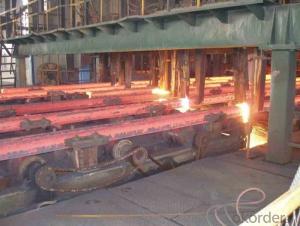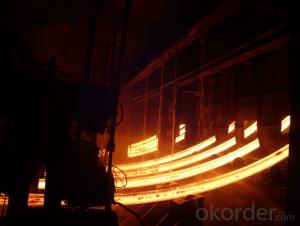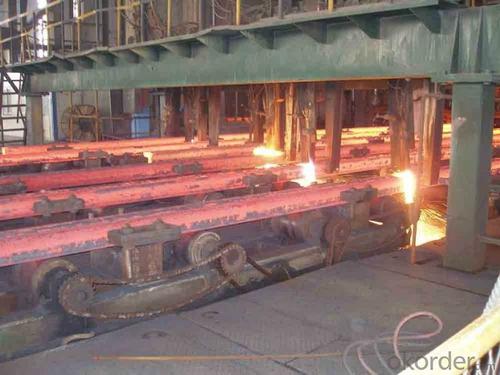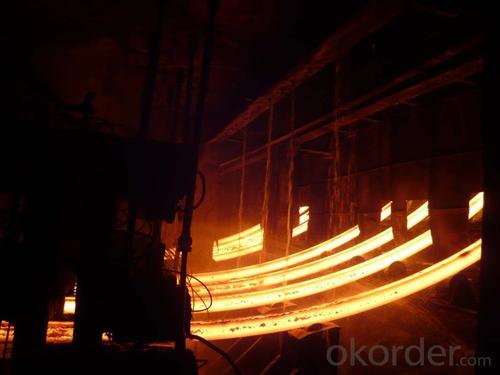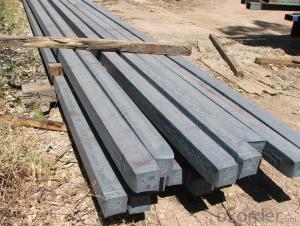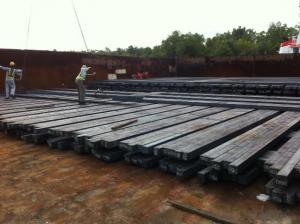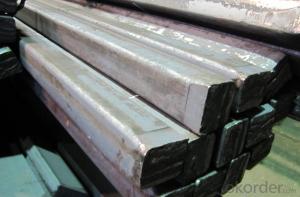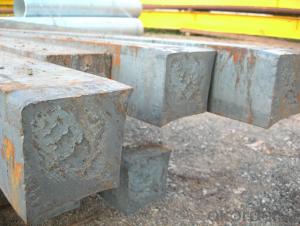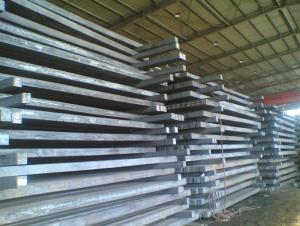Prime square alloy steel billet 170mm Q235
- Loading Port:
- Shanghai
- Payment Terms:
- TT OR LC
- Min Order Qty:
- 100 m.t.
- Supply Capability:
- 10000 m.t./month
OKorder Service Pledge
OKorder Financial Service
You Might Also Like
Structure of Prime square alloy steel billet 170mm Q235
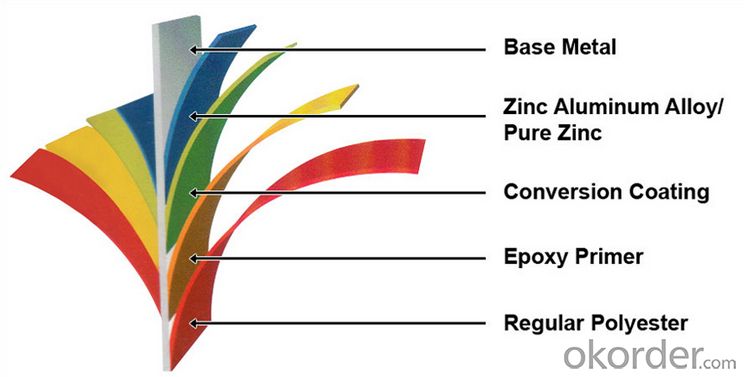
Description of Prime square alloy steel billet 170mm Q235
1. Prepainted steel coil is coated with organic layer, which provides higher anti-corrosion property and a longer lifespan than that of galvanized or galvalume steel sheets.
2. The base metals for prepainted steel coil consist of cold rolled, HDGI Steel, electro-galvanized and hot-dip alu-zinc coated steel. The finish coats of prepainted steel coil can be classified into groups as follows: polyester, silicon modified polyesters, polyvinylidene fluoride, high-durability polyester, etc.
3. The production process has evolved from one-coating-and-one-baking to double-coating-and-double-baking, and even three-coating-and-three-baking.
4. The color of the prepainted steel coil has a very wide selection, like orange, cream-colored, dark sky blue, sea blue, bright red, brick red, ivory white, porcelain blue, etc.
5. The prepainted steel coils can also be classified into groups by their surface textures, namely regular prepainted sheets, embossed sheets and printed sheets.
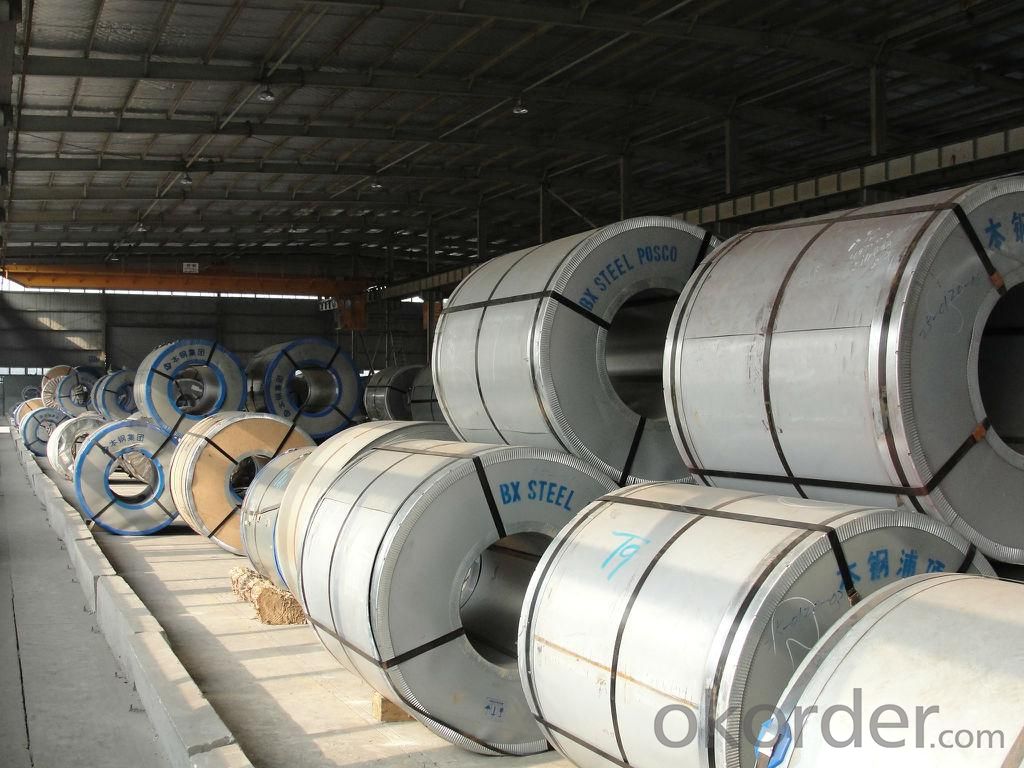
Main Feature of Prime square alloy steel billet 170mm Q235
1. Thickness: ≥20μm
2. Pencil Hardness: 2H
3. 60° specular glossiness of coating: >60
4. 180°bend: ≤3T
5. Impact: ≥9J
6. Salt Fog Resistant: ≥500h
7. Color difference:<0.8δe< span="">
Applications of Prime square alloy steel billet 170mm Q235
1) Excellent corrosion resistance: The zinc layer provides a good protection of Pre-painted Galvanizeed Steel Sheet.
2) High heat resistance: The reflective surface of the material aids in efficiently reflecting the sunlight away and in turn reducing the amount of heat transmitted. The thermal reflectivity converts into energy savings.
3) Aesthetics: Pre-Painted Galvanized steel sheet is available in plethora of patterns and multiple sizes as per the requirements that given by our customers.
4) Versatility: can be used in the various areas.
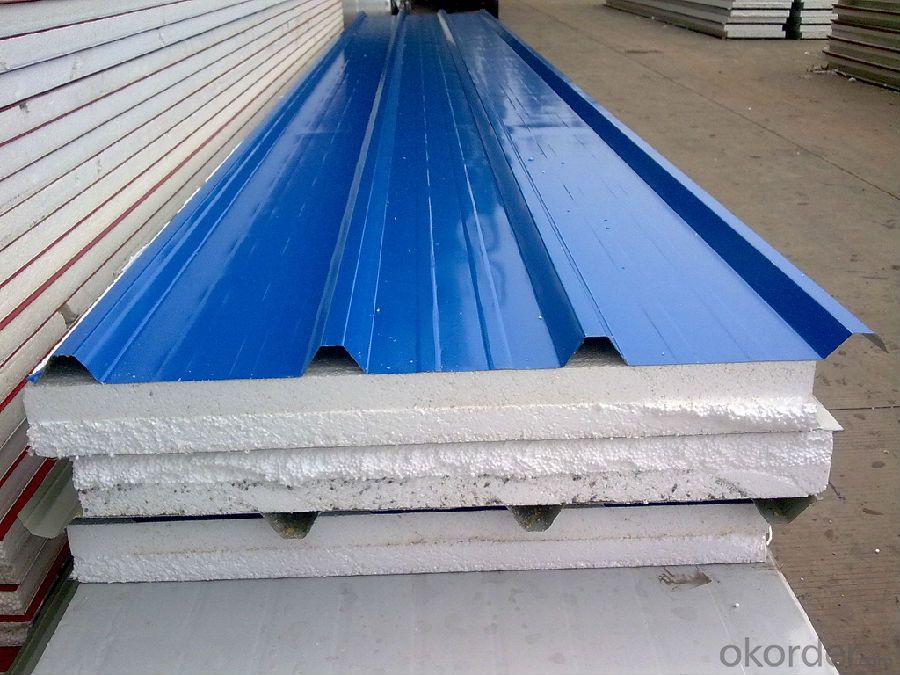
Specifications of Prime square alloy steel billet 170mm Q235
Product | Billet |
Material Grade | SGCC / SGCH / DX51D+AZ, etc |
Thickness | 0.6-3.0mm |
Width | 500-1500mm |
Tolerance | Thickness: +/-0.02mm , Width:+/-2mm |
Zinc-coating | Z30-150g/m2 |
Technique | Raw material: Hot rolled steel coil --> Cold rolled_>hot dipped galvalume |
Surface | Dried, Chromated, Unoiled |
Spangle | Regular spangle , small spangle, zero spangle |
ID | 508MM 610MM |
Coil weight | 1-25MT |
Export package | Cardboard inner sleeves, Waterproof paper, galvanized steel covered and steel strip packed |
FAQ of Prime square alloy steel billet 170mm Q235
We have organized several common questions for our clients,may help you sincerely:
1. How Can I Visit There?
Our company is located in Tianjin City, China, near Beijing. You can fly to Tianjin Airport Directly. All our clients, from home or aboard, are warmly welcome to visit us!
2. How Can I Get Some Sample?
We are honored to offer you sample. Right now this is still a beta interface, we want you to tell us how to improve it. To begin with you won't be able to login, and results are limited to 50,000 records. As of June 2014, the entire site is powered by an open API and both monthly and annual data are publicly accessible. Keep an eye out for other new features being added based on your feedback!
3. Why choose CNBM?we always fix steel produce in container well to make it safe arrive at destination port
we always provide best and professional forward service for our buyer
we always apply 14days free detention for our buyers container in destination
we provide one set After-sales service for our buyer
we provide China inland steel market price report
we help our buyer become number one in local market .
- Q: What are the main types of steel billet rolling mills?
- There are several main types of steel billet rolling mills, each with its unique characteristics and functionalities. These mills are designed to process steel billets into various shapes and sizes, catering to the diverse requirements of different industries. 1. Two-high rolling mills: This type of rolling mill consists of two horizontally mounted rolls that rotate in opposite directions. Two-high mills are commonly used for shaping and reducing the thickness of steel billets. They are relatively simple in design and are suitable for light to medium-duty applications. 2. Three-high rolling mills: Three-high mills have three rolls arranged vertically in a triangular configuration. The upper and lower rolls are driven, while the middle roll is idle and adjustable. This design allows for greater flexibility in shaping and reducing the billet's dimensions. Three-high mills are commonly used for producing high-quality finished products with precise dimensions and surface finish. 3. Four-high rolling mills: Four-high mills have four rolls, two small diameter work rolls and two larger diameter backup rolls. The work rolls are driven, while the backup rolls provide support and adjust the billet's thickness. Four-high mills are highly versatile and can be used for a wide range of applications, including both hot and cold rolling processes. 4. Cluster mills: Cluster mills consist of multiple small-diameter rolls arranged in a cluster. These rolls work together to reduce the billet's thickness and shape it into the desired form. Cluster mills are commonly used for producing high-precision products, such as wires and thin strips. 5. Steckel mills: Steckel mills are specialized rolling mills designed for the production of heavy-gauge plates and strips. They consist of a combination of a reversible rolling mill and a continuous casting machine. Steckel mills are known for their high productivity and the ability to produce a wide range of steel products with excellent surface quality. Each type of steel billet rolling mill has its advantages and is suitable for specific applications. The choice of mill depends on factors such as the desired final product, required dimensions, production volume, and budget constraints.
- Q: What is the typical density of a steel billet?
- The density of a steel billet is contingent upon the particular type of steel employed. Nonetheless, in broad terms, the range of density for a steel billet falls between 7.75 and 8.05 grams per cubic centimeter (g/cm³). This density may exhibit slight fluctuations due to the steel's composition and quality. It is crucial to acknowledge that the presence of any impurities or contaminants in the material may additionally impact the density of a steel billet.
- Q: What are the potential applications of steel billets in the food and beverage industry?
- The food and beverage industry has a wide range of potential applications for steel billets. One of the primary uses is in producing stainless steel equipment, such as tanks, vessels, and processing machinery. Due to its corrosion resistance, durability, and hygienic properties, stainless steel is the preferred material in this industry. Steel billets are commonly utilized in the manufacturing of stainless steel pipes and fittings, which are essential components in food and beverage processing plants. These pipes and fittings are responsible for safely and reliably transporting fluids, gases, and food products. Additionally, steel billets can be used to create stainless steel bar and rod, which find various applications in kitchen equipment, cutlery, and utensils. Stainless steel bar and rod are ideal for food preparation and serving as they are highly resistant to staining, rusting, and chemical corrosion. Moreover, steel billets can be employed in the production of stainless steel sheets and plates, which are used for food storage and packaging. Stainless steel sheets and plates offer a durable and hygienic surface for food storage containers, countertops, and shelving units. They are easy to clean, resistant to bacterial growth, and do not react with acidic or alkaline food products. Overall, steel billets play a vital role in the food and beverage industry by providing the necessary raw material for manufacturing stainless steel equipment, pipes, fittings, bar, rod, sheets, and plates. The use of stainless steel enhances food safety, ensures product integrity, and contributes to the efficient and hygienic operation of food and beverage processing facilities.
- Q: How do steel billets contribute to the manufacturing of packaging materials?
- Steel billets are used in the manufacturing of packaging materials as they provide the necessary strength and durability required to create sturdy and long-lasting packaging products. The steel billets are melted and formed into various shapes and sizes, which are then used to create packaging containers, cans, and other materials. These packaging materials are essential for safely storing and transporting goods, protecting them from external elements and ensuring their integrity throughout the supply chain.
- Q: How are steel billets used in the production of construction components?
- Construction components rely on steel billets as a crucial raw material. These billets are utilized primarily in the creation of various structural elements like beams, columns, and bars, which compose the framework of buildings and infrastructure projects. The process commences with steel billets, semi-finished products formed by casting molten steel into rectangular or square shapes. Subsequently, these billets undergo further processing and transformation into specific construction components through diverse manufacturing techniques. One widespread application of steel billets involves beam production, which is indispensable for supporting the weight of floors, roofs, and walls in buildings. The billets are subjected to rolling mills, where they are heated and passed through a series of rollers to acquire the desired beam profile. This process facilitates the production of beams in varying sizes and lengths, tailored to the unique requirements of each construction project. Steel billets are also employed in the manufacture of columns, which provide vertical support to structures. Similar to beams, billets are processed through rolling mills to achieve the necessary column shape. Subsequently, the columns are connected to the beams, creating the skeletal framework of the building and ensuring strength and stability. Additionally, steel billets find application in the production of reinforcing bars, commonly referred to as rebar, used for reinforcing concrete structures. These rebar play a critical role in enhancing the strength and durability of concrete. Billets are once again processed through rolling mills to create rebar in various diameters and lengths. The rebar is then embedded within the concrete to provide tensile strength, preventing cracking, and increasing the overall structural integrity. In summary, steel billets are pivotal in the production of construction components as they serve as the starting point for the manufacturing process. They are transformed into beams, columns, and rebar, which offer the necessary strength and stability required for building and infrastructure projects.
- Q: How are steel billets used in the production of automotive parts?
- Steel billets are an essential component in the production of automotive parts. These billets are semi-finished steel products that are created through a casting process. They are usually rectangular or square in shape. In the automotive industry, steel billets are primarily used as a raw material for forging and rolling processes. They serve as the starting point for manufacturing a wide range of automotive components such as engine parts, transmission gears, crankshafts, connecting rods, and axle shafts, among others. One of the main applications of steel billets in automotive part production is forging. Forging involves shaping the billets into the desired shapes through the application of heat and pressure. This process enhances the strength and durability of the automotive parts. Forged components are known for their superior mechanical properties, including high strength, impact resistance, and resistance to fatigue failures. Common forged automotive parts include crankshafts, connecting rods, and suspension components. Another way steel billets are used in automotive part manufacturing is through the rolling process. Rolling involves passing the billets through a series of rollers to reduce their thickness and shape them into sheets or strips, which can then be further processed to make various components. Rolled steel is commonly utilized for manufacturing automotive body panels, chassis frames, and structural parts. Rolled components offer excellent formability, which is crucial for producing complex shapes and achieving high precision in automotive parts. In summary, steel billets play a vital role in the production of automotive parts. They are the starting point for forging and rolling processes, which are used to manufacture a wide range of components. By utilizing steel billets, automotive manufacturers can produce parts that possess exceptional strength, durability, and precision, ensuring the overall quality and performance of the vehicles they produce.
- Q: Can steel billets be used in the production of pipes?
- Yes, steel billets can be used in the production of pipes. Steel billets are semi-finished metal products that can be further processed into various shapes, including pipes. The billets are heated, pierced, and elongated to form seamless pipes or rolled and welded to create welded pipes.
- Q: What are the potential applications of steel billets in the transportation sector?
- Steel billets have several potential applications in the transportation sector, including the production of various components such as engine parts, chassis, and body frames. They offer excellent strength-to-weight ratio, durability, and resistance to corrosion, making them ideal for manufacturing vehicles that can withstand harsh conditions. Additionally, steel billets can be easily formed into different shapes, allowing for the creation of complex and lightweight designs. Overall, their versatility and reliability make steel billets a valuable material in the transportation industry.
- Q: What are the common heat treatment processes for steel billets?
- Steel billets can undergo several heat treatment processes to modify their mechanical properties, including hardness, strength, and toughness, to meet specific requirements for different applications. One prevalent heat treatment process for steel billets is annealing. This involves heating the steel to a specific temperature and maintaining it at that temperature for a set duration, followed by gradual cooling. Annealing helps alleviate internal stresses in the steel, improve its machinability, and enhance its ductility. Another widely used heat treatment process for steel billets is quenching and tempering. Quenching involves rapidly cooling the steel from a high temperature to room temperature using a liquid or gas medium, like water or oil. This process results in hardened steel with increased strength and hardness. However, the steel becomes brittle after quenching, so it is then tempered by reheating it to a lower temperature and holding it at that temperature for a specific time period. Tempering reduces brittleness and improves the toughness and ductility of the steel. Normalizing is another heat treatment process employed for steel billets. It entails heating the steel to a temperature above its critical transformation temperature and then cooling it in still air. Normalizing helps refine the grain structure of the steel, improve its mechanical properties, and enhance its machinability. Lastly, stress relieving is a process used to reduce internal stresses in steel billets that may have been generated during manufacturing processes such as casting or forging. Stress relieving involves heating the steel to a specific temperature and maintaining it at that temperature for a certain duration, followed by gradual cooling. This process aids in improving dimensional stability and reducing the risk of distortion or cracking in the steel. Overall, these common heat treatment processes for steel billets play a vital role in optimizing the properties and performance of steel for various industrial applications, including automotive, construction, aerospace, and energy sectors.
- Q: What does "billet" mean?
- Steelmaking and continuous casting of steel products are mainly used for steel rolling, such as round bar, wire rod, sheet metal and so on
Send your message to us
Prime square alloy steel billet 170mm Q235
- Loading Port:
- Shanghai
- Payment Terms:
- TT OR LC
- Min Order Qty:
- 100 m.t.
- Supply Capability:
- 10000 m.t./month
OKorder Service Pledge
OKorder Financial Service
Similar products
Hot products
Hot Searches
Related keywords
